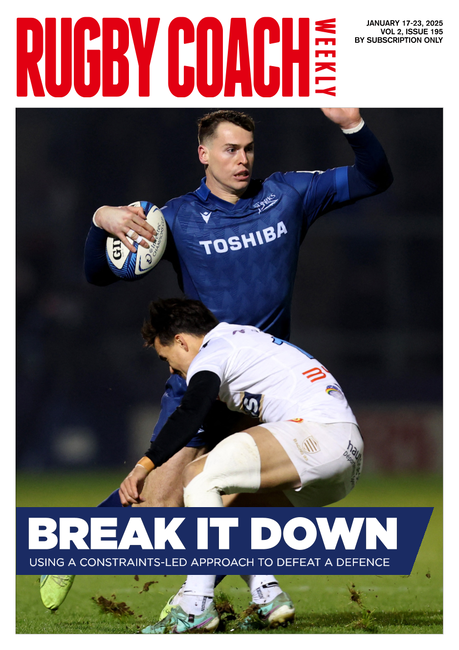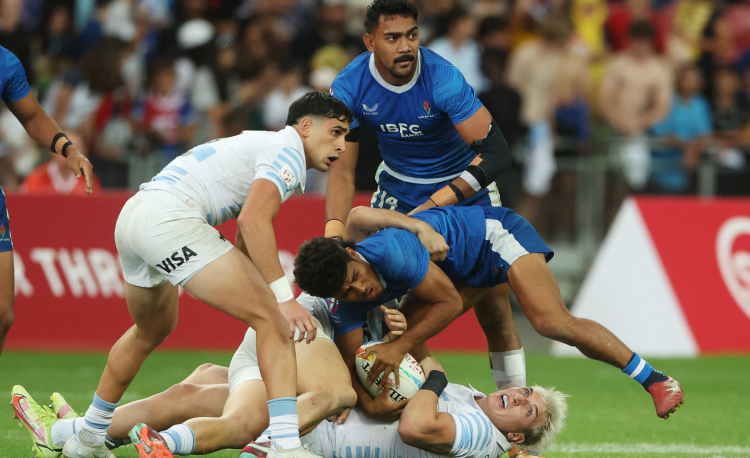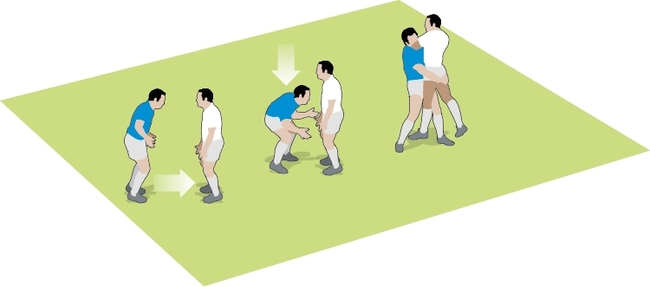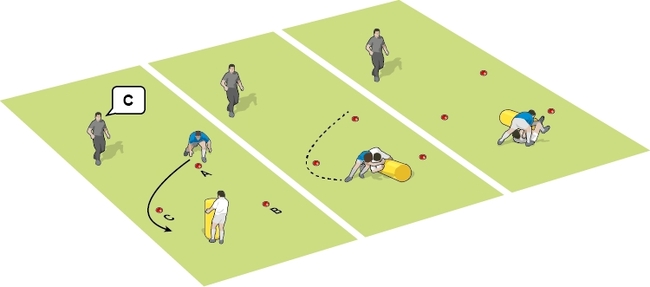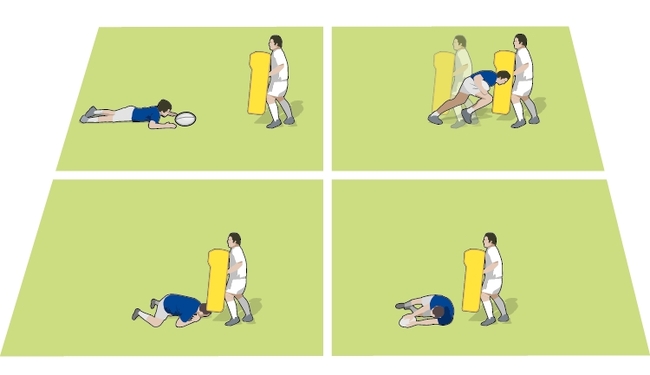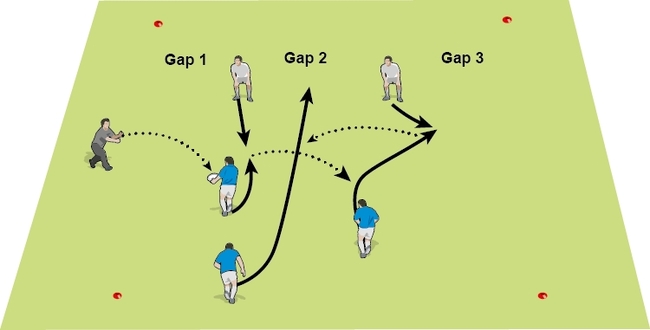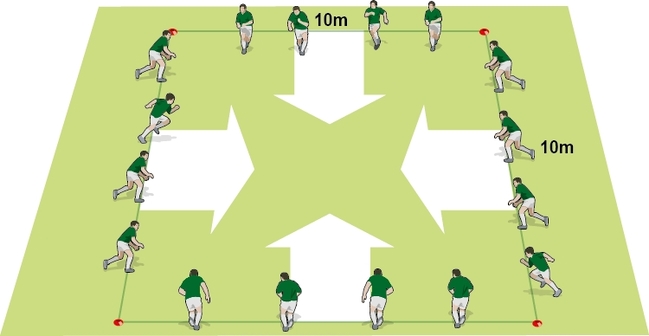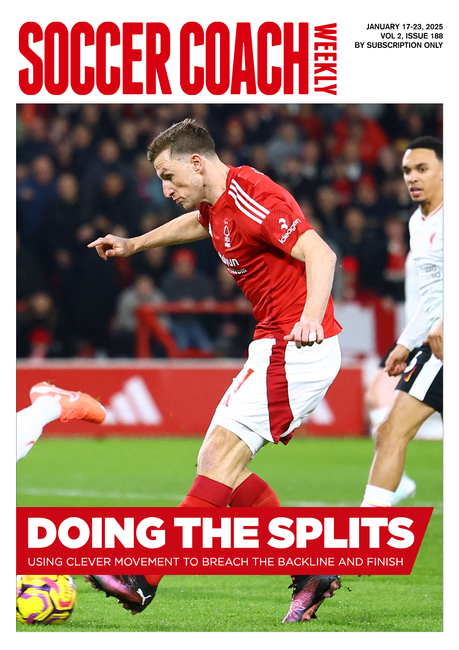Developing line speed around ruck for square blitz defence
Create scenarios to help understand roles defending the edge of a ruck. It focuses on good speed off the line and being in a strong position to make a tackle.
Create scenarios to help understand roles defending the edge of a ruck. It focuses on good speed off the line and being in a strong position to make a tackle.
Focus: Scanning attack, getting off the line, making positive tackles in combative area.
Use this exercise as a skill zone during training to help refocus on defence or an introduction to prime the team pre-game.
SET UP TO PLAY
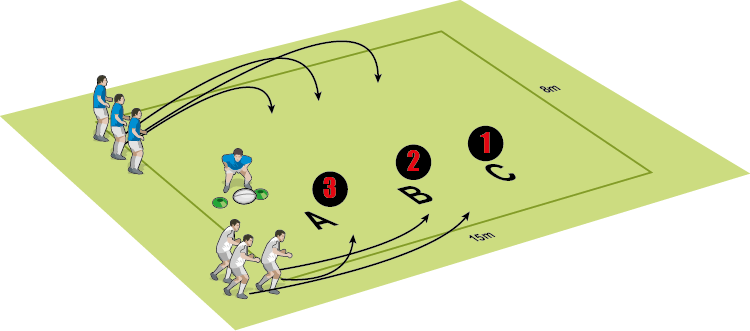
- Set an 8m by 15m box with a ruck marked out by cones in one corner.
- Put three attackers at the corner behind the ruck. Put three defenders outside the box, in line with the ruck. Have a feeder at the ruck.
- Have the attackers and defenders run into the box, with the attackers forming an attacking line. The defenders use your preferred ruck set-up.
DEFENDING FOCUS FROM PLAY
The defenders fill in from the outside in. I call it CBA defence. That means the first defender to get to the ruck marks the third attacking player.
The defenders then set square, meaning they are directly opposite the attacking player. They then “say what they see”, to help their teammates know they are looking forward and focusing on the attacking spaces.
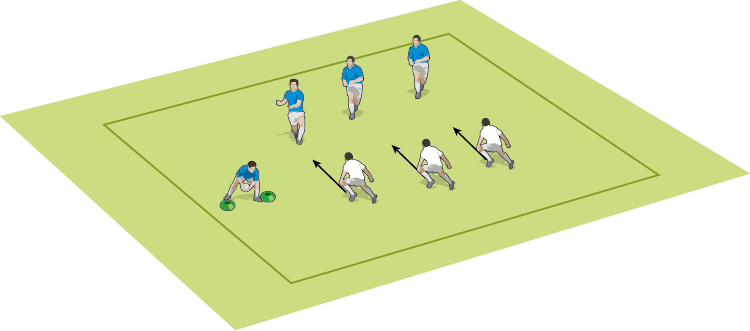
Have the feeder pass the ball, and the defenders race off the line to make a tackle. At that speed, they chop their feet just before the tackle. Because they are square, they should be aware of the half-spaces, that is the fact that an attacker may change their angle.
However, they must trust their inside defender, making sure that the attacking channel in front of them is secure.
BUILDING THE EXERCISE
I normally start with the defenders on their chests before rising to run around the corner.
We then progress to one defender starting in the box on the far edge with others linking up.
To increase the difficulty, double the box size to create a two-sided attack, with the ruck starting in the middle. Now you can add in more players.
Encourage attackers to challenge the half-spaces and for the 9 to pick and run. The 9 can also start away from the ruck.
Challenge the defence to see if they can pass a certain line, in other words, how far behind the gain line can they get to the ball carrier. This can make it competitive between attacking and defending groups.
DEVELOPMENTS
So far, the tackles should only be “shoulder in”, where the tackler aims to put their shoulder into the ball carrier, but not complete the tackle.
For more contact, play a game rewarding square tackles/tackles behind the gain line with a turnover. That means the defending team remain defending until they have made that type of tackle.
Have an emphasis on creating certainty through scanning (especially before 9 arrives at the ruck), and on players celebrating positive defence.
This exercise doesn’t look at the role of players next to the ruck. With more players, you can start to explore this.
Related Files
Newsletter Sign Up
Coaches Testimonials

Gerald Kearney, Downtown Las Vegas Soccer Club

Paul Butler, Florida, USA

Rick Shields, Springboro, USA

Tony Green, Pierrefonds Titans, Quebec, Canada
Subscribe Today
Be a more effective, more successful rugby coach
In a recent survey 89% of subscribers said Rugby Coach Weekly makes them more confident, 91% said Rugby Coach Weekly makes them a more effective coach and 93% said Rugby Coach Weekly makes them more inspired.
Get Weekly Inspiration
All the latest techniques and approaches
Rugby Coach Weekly offers proven and easy to use rugby drills, coaching sessions, practice plans, small-sided games, warm-ups, training tips and advice.
We've been at the cutting edge of rugby coaching since we launched in 2005, creating resources for the grassroots youth coach, following best practice from around the world and insights from the professional game.

